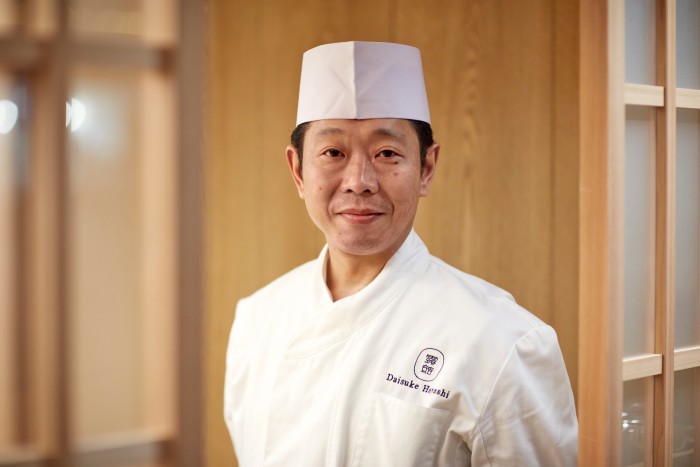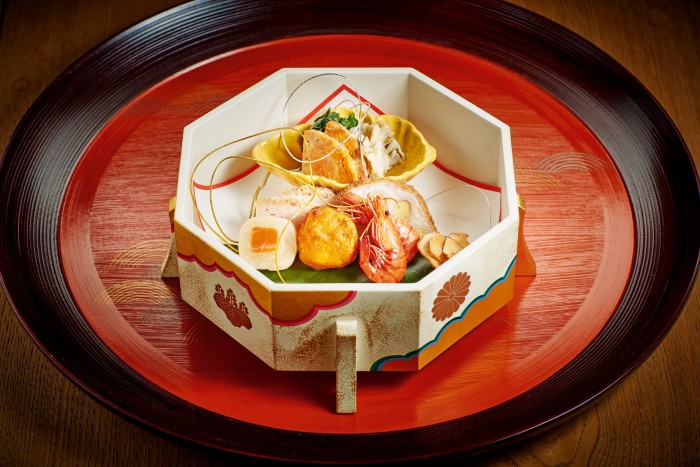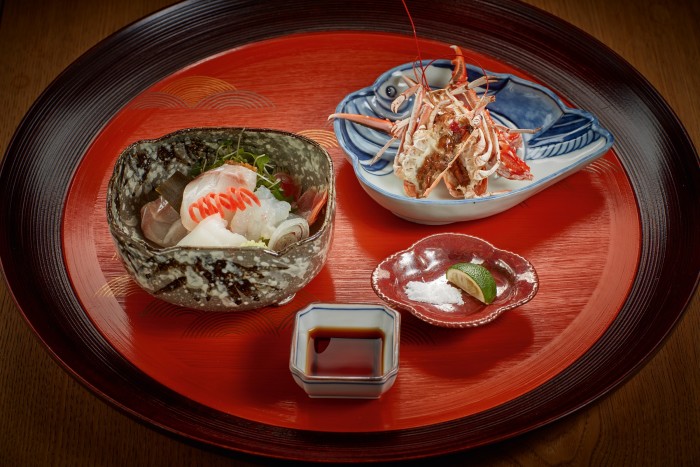It’s rare to find something new and unprecedented on the London dining scene. But Roketsu in Mayfair claims to be just that – the capital’s first authentic Japanese kaiseki restaurant. Kaiseki derives from Buddhist tea ceremonies and is a formal meal consisting of a dozen or so meticulously prepared dishes served in a prescribed order that showcase ingredients at their peak seasonality. It is considered the highest form of Japanese cuisine. Roketsu’s chef Daisuke Hayashi is a master of kaiseki who trained in Kyoto under another master, Yoshihiro Murata – the man with seven Michelin stars to his name who gave Rene Redzepi and Heston Blumenthal their grounding in Japanese food.

Kaiseki is most common in Japan but there are excellent versions elsewhere (albeit incorporating western twists). These include Odo and Shuko in New York and Hayato and N/naka in Los Angeles. In London, kaiseki used to be available at (now closed) Sake No Hana in St James and Chrysan on Broadgate West. But neither was authentic, says Hayashi, who worked at both. He calls their approach “fusion”, in that, for instance, at Chrysan the meal followed the French style with amuse-bouche, meat and fish courses. Currently you can order a kaiseki menu at Umu on Bruton Place, but it also comes as an option alongside à la carte. Roketsu, by contrast, offers only kaiseki, and its authentic approach extends beyond the artful arrangement of food on the plate to all aspects of the design, including the dining room.
This adheres to the “sukiya” (tea room) tradition with lattice screens, shoji lighting and a Japanese cypress counter that seats 10, with a maximum of 16 diners per night (a private dining room also seats six). It is like dining in Kyoto, says Hayashi. And certainly you feel transported. The only non-Japanese elements are the Danish chairs and many of the ingredients, which are sourced locally for freshness in keeping with kaiseki thinking.


I was expecting the meal to be prolonged and austere. (“I have many customers who eat for several hours without a single word to each other or anyone else,” Murata has said of the experience in Kyoto). But if the patrons at Roketsu remained largely mute (including myself), it was more out of a sense of wonder as we watched the comings and goings behind the counter of two chefs, the sommelier and two women servers, who wore red slip dresses under black blazers.
The atmosphere felt quite ’80s, as did the soundtrack of classical greatest hits. The benign mood kicked in with the first (sakizuke) course, a restorative broth and fishy custard made from Scottish diver scallops, ginger and bottarga that felt like a warm hug from the inside. The follow-up (hassun) course set the seasonal theme for my visit in February with exquisite sushi-like bites of sardine, wild rocket, prawn, burdock, trout and herring roe marinated in sake lees. Another highlight was a bowl of squid, sea urchin and egg yolk/soy sauce that resembled a carbonara. The deep-fried rice-cracker-crumbed monkfish was seductively moist and fish-and-chip-level tasty in a gluey turnip soup.
The meekness of certain other dishes had me looking for extra jolts of flavour. The sunomono, a vinegary course intended to cleanse the palate, consisted of a Jersey oyster doused in celeriac purée and tomato water with Oscietra caviar. It tasted overwhelmingly – and uninterestingly – of celeriac and failed to jivy me up one bit. But such disappointments were redeemed by the comfortingly sticky crab rice in the penultimate (gohan) course and a fruit jelly dessert with yuzu sorbet that fizzed with citrusy zest. Billed at two and a half hours from start to finish, my meal only took two, which seemed about right. The food may have been authentic to Kyoto, but the tempo was perfectly London.
Stay connected with us on social media platform for instant update click here to join our Twitter, & Facebook
We are now on Telegram. Click here to join our channel (@TechiUpdate) and stay updated with the latest Technology headlines.
For all the latest Travel News Click Here
